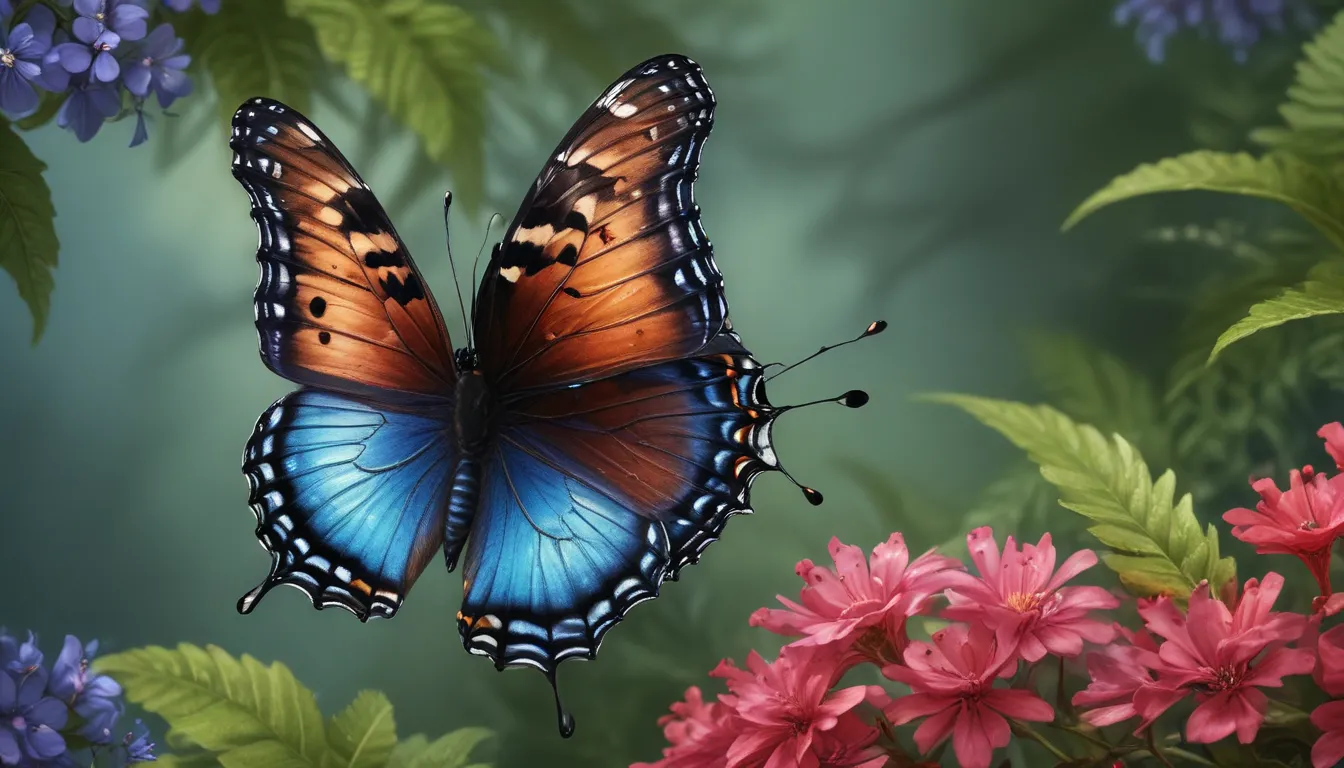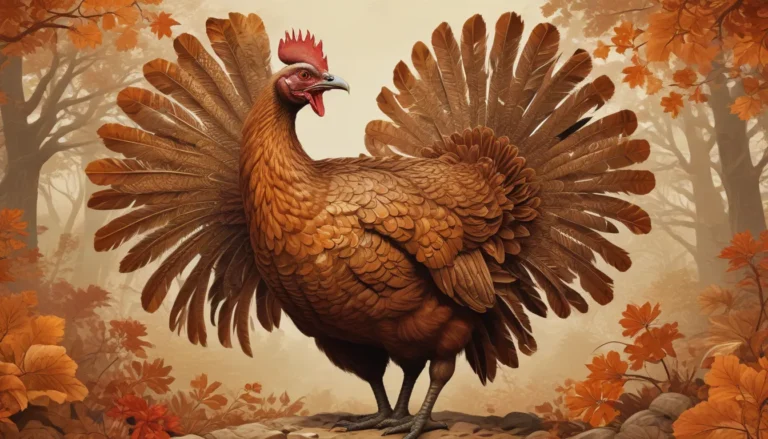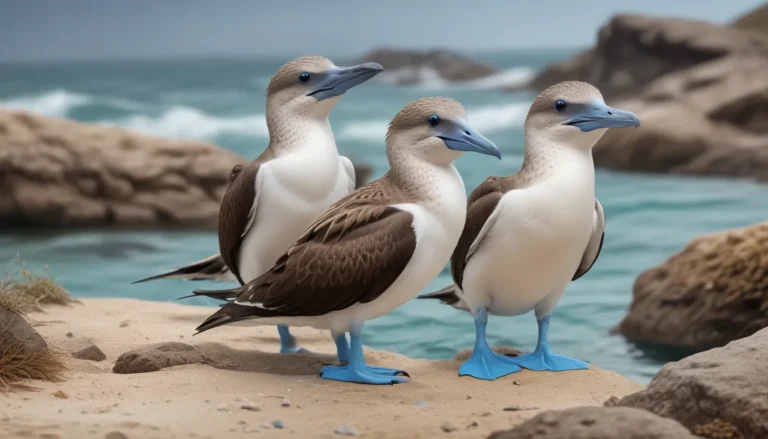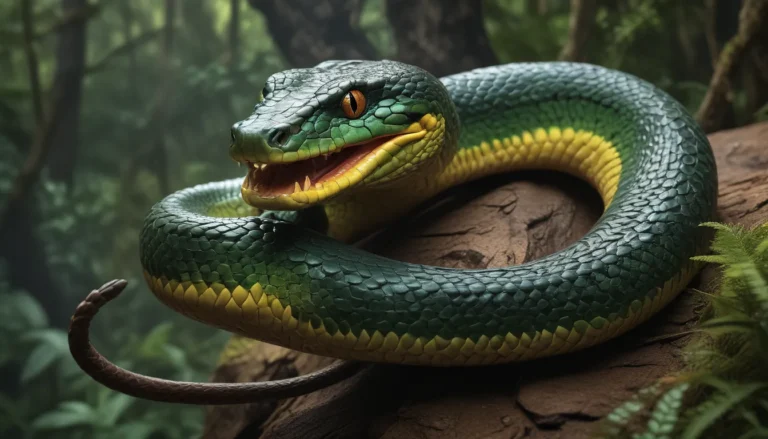The pictures we use in our articles might not show exactly what the words say. We choose these pictures to make you interested in reading more. The pictures work together with the words but don’t take their place. The words still tell you the important facts.
Butterflies are one of nature's most captivating creatures, enchanting us with their vibrant colors and delicate wings. Among them, the Red Spotted Purple Butterfly stands out with its striking red and black wings adorned with beautiful blue spots. This species has captured the fascination of butterfly enthusiasts worldwide. In this article, we will delve into 18 fun and fascinating facts about the Red Spotted Purple Butterfly, exploring its unique characteristics, behaviors, and life cycle. Get ready to spread your wings and embark on a journey of discovery into the captivating world of this beautiful butterfly.
The Red Spotted Purple Butterfly: A Native Beauty of North America
The Red Spotted Purple Butterfly, scientifically known as Limenitis arthemis, is a stunning species native to the eastern and central parts of North America. Known for its striking coloration and unique patterns, this butterfly is a marvel to behold in the wild.
Delving into the Butterfly’s World: Brush-footed Beauty
Belonging to the brush-footed butterfly family, Nymphalidae, the Red Spotted Purple Butterfly is characterized by the reduced size and structure of its front legs, which have brush-like tips, giving it its distinctive appearance.
A Medium-sized Wonder: Wingspan and Coloration
With a wingspan that can reach up to 3 inches, the Red Spotted Purple Butterfly is considered a medium-sized butterfly. Its wings are adorned with intricate patterns of black, blue, and red-orange spots, creating a visually stunning sight in nature.
Transformations of Elegance: Complete Metamorphosis
Like all butterflies, the Red Spotted Purple Butterfly undergoes a complete metamorphosis consisting of four stages: egg, larva (caterpillar), pupa (chrysalis), and adult. Each stage plays a crucial role in the butterfly's life cycle, showcasing the beauty of transformation.
From Caterpillar to Butterfly: Feeding Habits
During their larval stage, Red Spotted Purple caterpillars feed on a variety of host plants, including cherry, birch, willow, poplar, and oak trees. These plants provide essential nutrition for the caterpillars' growth and development.
Grace in Flight: The Elegance of Red Spotted Purple Butterflies
In flight, Red Spotted Purple Butterflies exhibit a graceful and fluttery movement, gliding through the air with elegance. Their presence in meadows, gardens, and woodlands adds a touch of beauty to these natural settings.
Master Mimics: Evading Predators with Style
Red Spotted Purple Butterflies have evolved to mimic the appearance of toxic species like the Pipevine Swallowtail Butterflies. This mimicry acts as a defense mechanism, deterring potential predators by appearing unpalatable.
Seeking Shade: Habitat Preferences
These butterflies have a preference for shaded habitats, often found in forests, woodlands, and shaded gardens. They are less commonly seen in open, sunlit areas, showcasing their need for sheltered environments.
Culinary Choices: Feeding Habits of Adult Butterflies
While caterpillars rely on host plants, adult Red Spotted Purple Butterflies have a varied diet. They feed on rotting fruits, tree sap, and even animal droppings, showcasing their adaptability in food sources.
Solitary Explorers: The Lifestyle of Red Spotted Purple Butterflies
Red Spotted Purple Butterflies are mostly solitary creatures, rarely seen in large groups. Each butterfly explores its territory individually, seeking out food sources and potential mates in their secluded world.
Longevity in Beauty: Lifespan and Territorial Behavior
With an average lifespan of 6 to 12 months, Red Spotted Purple Butterflies display strong territorial behavior, particularly among males. They engage in aerial battles to establish dominance and secure their territory.
Homebodies in Nature: Migratory Patterns
Unlike migratory butterfly species, Red Spotted Purple Butterflies do not exhibit long-distance migratory behavior. They prefer to stay within their preferred habitats, enjoying the comfort of familiar surroundings.
A Species of Stability: Conservation Status
The wide distribution and stable population of the Red Spotted Purple Butterfly contribute to its current non-threatened status. However, challenges such as habitat loss and fragmentation could pose risks to their long-term survival.
Summer Sojourn: Peak Activity Months
Red Spotted Purple Butterflies are most active during the summer months, thriving in warm temperatures ideal for their flight and feeding activities. Witness their beauty and grace in full bloom during this vibrant season.
Courtship Rituals: The Dance of Love
During courtship, male Red Spotted Purple Butterflies perform an elaborate dance to attract females. Flying in a zigzag pattern and emitting pheromones, they showcase their availability and fitness in a mesmerizing display of nature's wonders.
Nectar Nourishment: Flower Preferences for Butterflies
Red Spotted Purple Butterflies are drawn to flowers with tubular or trumpet-shaped blossoms, such as honeysuckle and butterfly bush. These flowers provide easy access to nectar, sustaining the butterflies with essential nutrients.
Pollinators of Beauty: Contribution to Ecosystems
As they feed on nectar from flowers, Red Spotted Purple Butterflies inadvertently aid in the pollination process. By transferring pollen between flowers, they play a vital role in ensuring the reproduction of various plant species, supporting the delicate balance of ecosystems.
In conclusion, the Red Spotted Purple Butterfly is a captivating species with unique attributes that showcase the wonders of nature. Its vibrant coloration, graceful flight, and essential role in pollination make it a valuable presence in the ecosystem. By understanding and appreciating the fascinating facts about these butterflies, we can enhance our admiration for their beauty and significance in the natural world. Next time you encounter a Red Spotted Purple Butterfly, take a moment to observe and marvel at its intricate patterns and behaviors, appreciating the marvels of nature around us.
FAQs: Exploring Common Questions
-
Significance of Red Spots: The red spots on Red Spotted Purple Butterflies serve as a form of mimicry, resembling distasteful or toxic species to deter predators.
-
Caterpillar Diet: Red Spotted Purple Butterfly caterpillars feed on various plants, including willow, poplar, and cherry, consuming leaves, stems, and flowers.
-
Migration Distances: Red Spotted Purple Butterflies undertake short-distance migrations within a few hundred miles based on food availability and weather conditions.
-
Lifespan Details: The average lifespan of a Red Spotted Purple Butterfly ranges from one to two months, varying based on environmental factors and hibernation habits.
-
Ecosystem Benefits: Yes, Red Spotted Purple Butterflies play a crucial role in pollination, transferring pollen between flowers to support the reproduction of numerous plant species and maintain ecosystem balance.
As we continue to explore the fascinating world of the Red Spotted Purple Butterfly, let us appreciate the beauty and importance of these magnificent creatures in nature's tapestry. Through our understanding and conservation efforts, we can preserve the delicate balance of ecosystems and sustain the wonders of biodiversity for generations to come.






